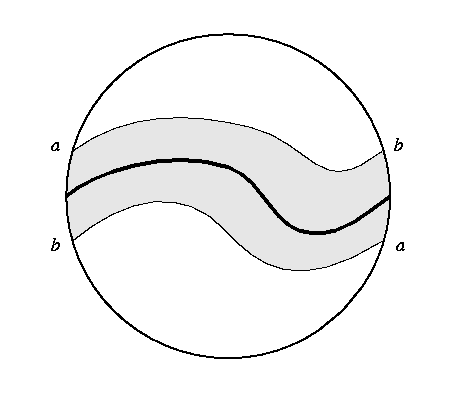
Classically, the real projective plane is defined as the space of lines through the origin in Euclidean three-space. This is somewhat difficult to picture, so other representations were developed.
Since a line through the origin is determined by its direction, we can consider the space of unit direction vectors in space, which is just the unit sphere centered at the origin. Now a unit vector and its opposite both determine the same line (you can point along the line in either direction) so we need to identify each point on the sphere with its opposite point in order to get a representation of the real projective plane. The identification of opposite points is called the antipodal map, and the sphere modulo the antipodal map is the real projective plane.
Now since every point on the southern hemisphere of the sphere is identified with one on the northern hemisphere, we can throw away the lower hemisphere (in other words, we can make the identifications required by the antipodal map), so that every point in the upper hemisphere uniquely determines a line in space. All that remains is the identification around the equator. Since the upper hemisphere is a topological disk, we can push it down to the equatorial plane to get the following representation of the real projective plane: it is a disk with opposite points on the boundary identified.
This final representation at least has the advantage of making the projective plane look like a two-dimensional surface (it is made from a piece of the plane). If we try to carry out these identifications, however, we run into trouble: we must introduce some self-intersection.
Any closed curve in the projective plane that does not intersect the boundary circle of the disk must bound a region, and so is a trivial cycle, so the only non-trivial cycles must include points of the boundary. A curve that starts at a point on the boundary and goes across to the opposite point (dark line in the diagram below) forms a closed curve (when the identifications are made on the boundary) that does not bound a region. This is the generator for the 1st homology group for the projective plane.

Under the operation of connected sum, a disk is removed, so taking the connected sum of a surface with the projective plane is simply adding a Möbius band to the surface. Thus the projective plane is fundamental to connected sum as well. For example, the Klein bottle is the connected sum of two projective planes.
3/3/95 dpvc@geom.umn.edu --
The Geometry Center